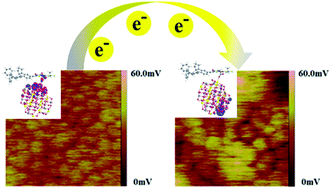Investigations of the charge transfer phenomenon at the hybrid dye/BiVO4 interface under visible radiation
Abstract
Photocatalytic hybrid systems were realized by associating bismuth vanadate (BiVO4) nanostructured thin films with anchored organic and metal–organic complex molecules. The chosen dyes are based on indoline and azo-based moieties. Optical and photoinduced charge transfer features were investigated experimentally and analysed theoretically through the electron band alignment on the organic/inorganic interface. Quantum calculations were carried out for the studied hybrid systems by using DFT and semi-empirical approaches. The calculations were performed by implementing a cluster model applied for the nanostructures and hybrid systems. The electronic density peculiarities point out efficient charge transfer for D149 based hybrids compared to azo-based systems. The electron distribution in hybrid systems inferred from the computational analysis and their experimental probing using Kelvin Force Microscopy (KFM) maps the way to understanding the photoinduced charge transfer occurring at the interfaces between organic dyes and an inorganic photocatalyst. The presented approach helps to predict suitable photoactive hybrid materials leading to efficient photocatalytic devices.



 Please wait while we load your content...
Please wait while we load your content...